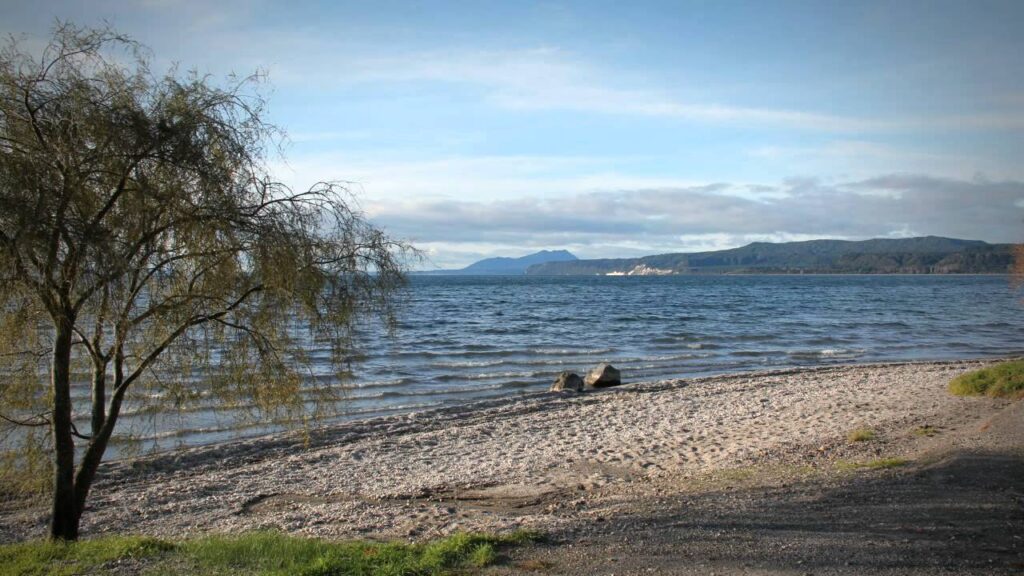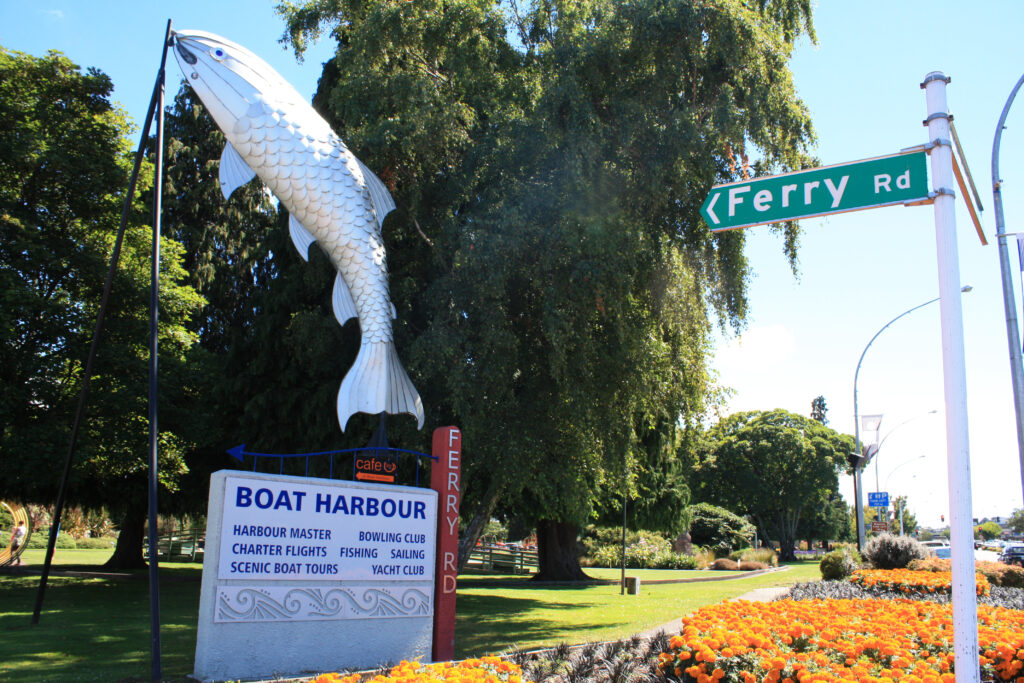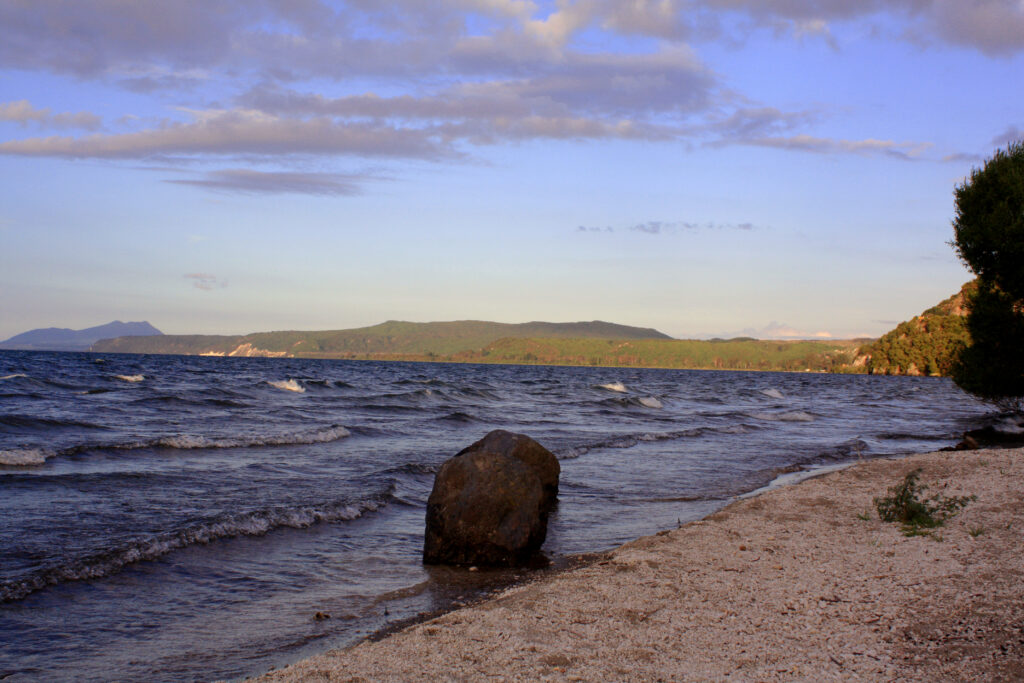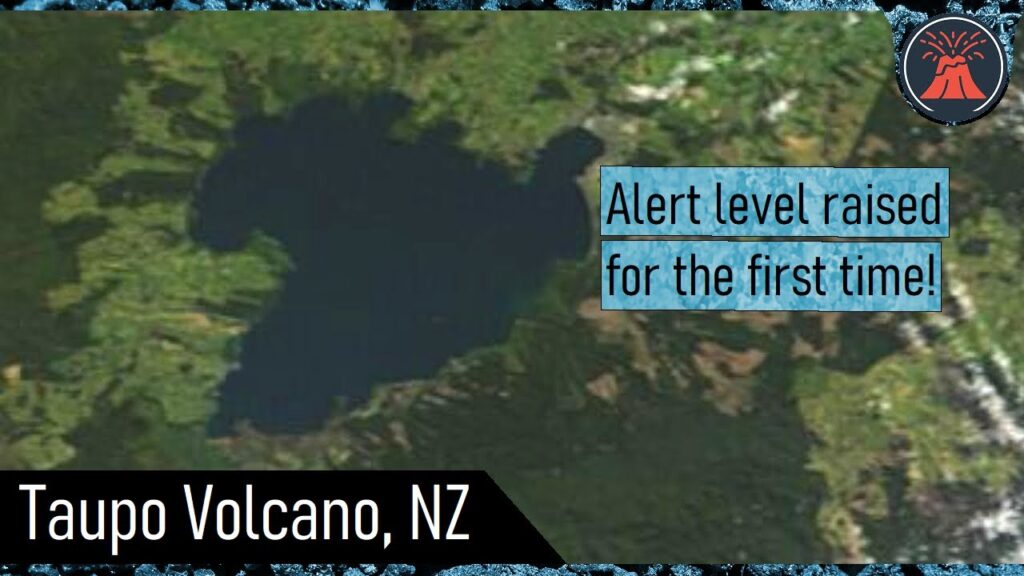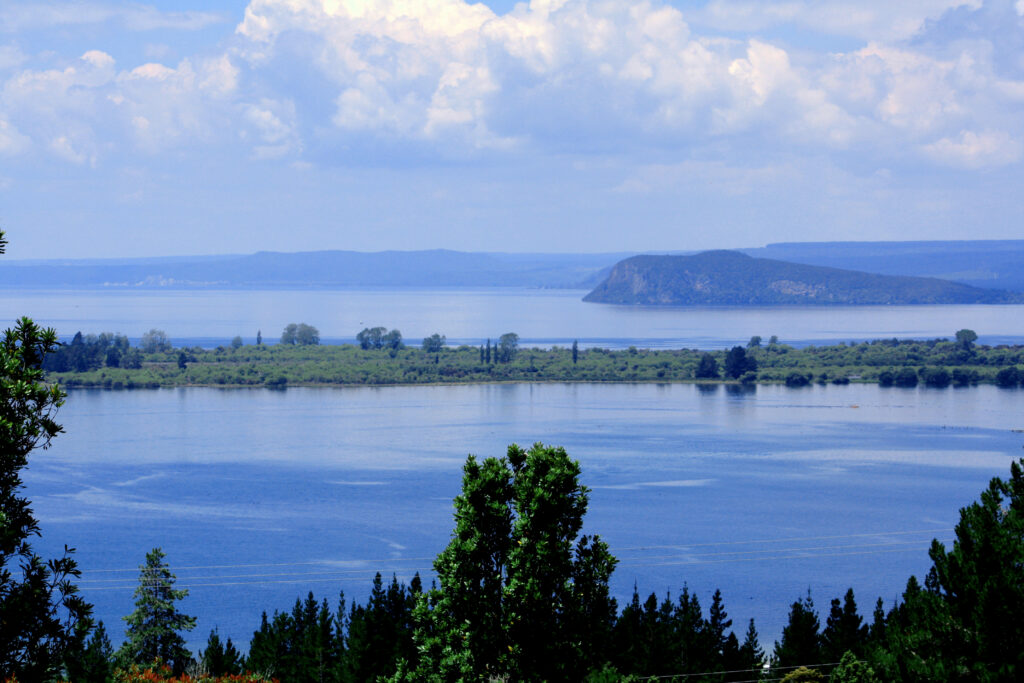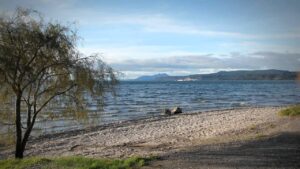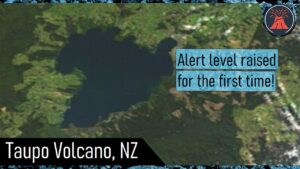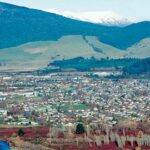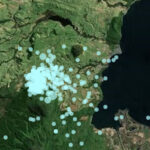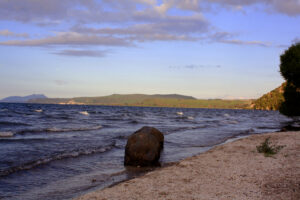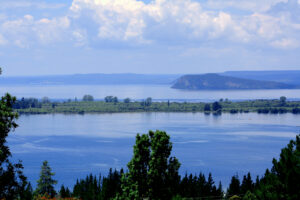Welcome to Taupo Eruption.
Lake Taupo, nestled in the heart of New Zealand’s North Island, has a cataclysmic past. It conceals a history marked by one of Earth’s most powerful volcanic eruptions, known as the Oruanui eruption, which occurred around 26,500 years ago. This cataclysmic event sculpted the landscape and significantly impacted the planet’s climate.
The colossal eruption resulted in the formation of Lake Taupo within the volcanic crater, leaving behind an indelible mark on the terrain. This immense explosion ejected an estimated 1,170 cubic kilometers of volcanic material, blanketing the land with ash, and affecting the world climate.
The legacy of this eruption is evident in the lake’s surroundings, with geological formations including the towering Mount Tauhara and steaming geothermal vents dotting the landscape. This was the most destructive eruption in Earth’s last 70,000 years.
Around the year 186 AD, another massive eruption took place. This eruption is considered the most destructive in the last 5000 years of Earth’s history.
Despite its violent past, Lake Taupo now draws visitors today with its serene beauty, offering recreational activities like fishing, boating, and various walks along its shores. A bustling town has grown up around the lake catering for tourists and offering a place to rest, as the town is conveniently located midway between New Zealand’s two biggest cities, Auckland and Wellington.
Today, scientists closely monitor the volcanic activity in the region, recognizing the potential for a future eruption. This lake along with other sites around the world are reminders of the Earth’s tumultuous geological past and the ongoing dynamic forces that shape our planet. Lake Taupo stands as a majestic testament to the awe-inspiring power of nature. A power that is surpassed by no other volcano in the last 70,000 years of out planet’s history.
 Volcanic Lake Taupō from a Māori perspective
Volcanic Lake Taupō from a Māori perspective  Number of earthquakes double at Taupō volcano
Number of earthquakes double at Taupō volcano 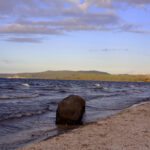 5.7 Taupo quake and aftermath
5.7 Taupo quake and aftermath 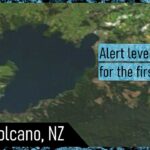 Taupo Supervolcano Alert Level Raised for the First Time
Taupo Supervolcano Alert Level Raised for the First Time 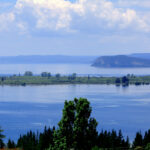 Alert Level 1
Alert Level 1 